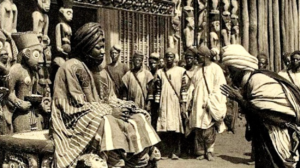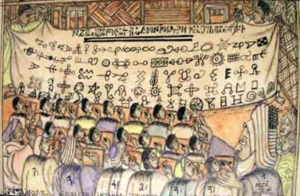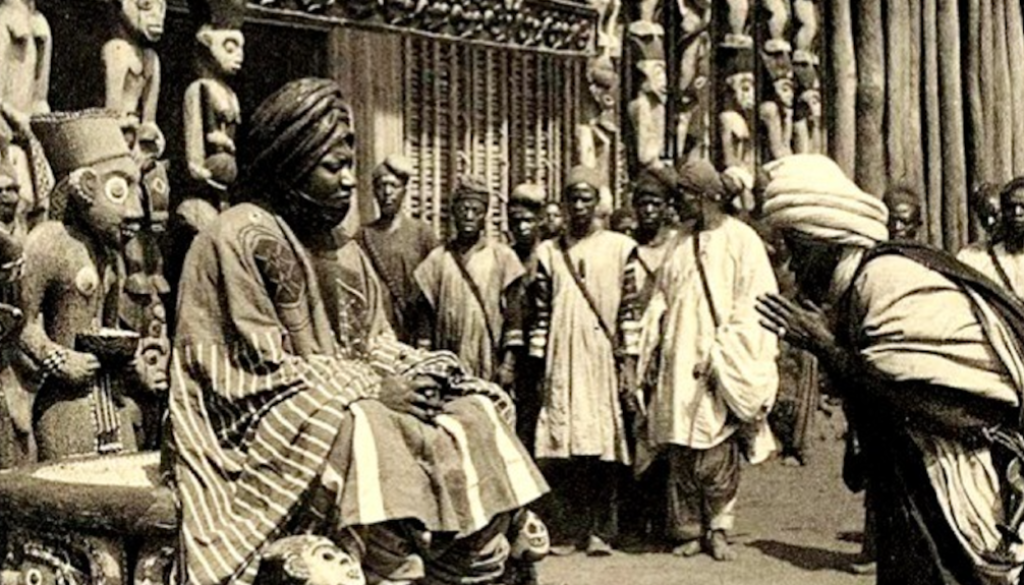The Right to Read: Bamum
 People often ask me, how does an alphabet become endangered? Assuming my Kickstarter campaign is successful, I’m going to include the Bamum script on my large statement sculpture to illustrate one all-too-common way.
People often ask me, how does an alphabet become endangered? Assuming my Kickstarter campaign is successful, I’m going to include the Bamum script on my large statement sculpture to illustrate one all-too-common way.
Starting around 1896, twenty-five-year-old King Ibrahim Njoya of the Bamum Kingdom in Cameroon invented a writing system for his people’s language.
He went about it in a way that was remarkably democratic and non-egocentric. He invited his subjects to send or give him simple signs and symbols, and he drew from them to create a system that he continued to refine over half a dozen drafts until, by roughly 1910, it was a fully functional syllabary of eighty characters.
Using this script, he wrote a history of his people, a pharmacopoeia, a calendar, maps, records, legal codes and a guide to good sex. He built schools, a printing press and libraries; he supported artists and intellectuals. 
This seems to have been all well and good in the eyes of the local colonial power while Cameroon was under German control, but when the French took over part of the country after the German defeat in World War I, they maneuvered Njoya out of power, smashed his printing press, burned his libraries and books, tossed out sacred Bamum artifacts and sent him into exile, where he died.
The sculpture I want to create will catch people’s attention because of its stunning wood and fascinating, unfamiliar writing, but then it will tell its stories and pass on a vital truth: there is no endangered alphabet without an endangered culture.
This is a vital and urgent truth, and nobody else is bringing it to the public. Please help us do so by supporting our funding campaign at https://www.kickstarter.com/projects/endangeredatlas/the-right-to-speak-the-right-to-read-the-right-to-write/.
Thanks.

